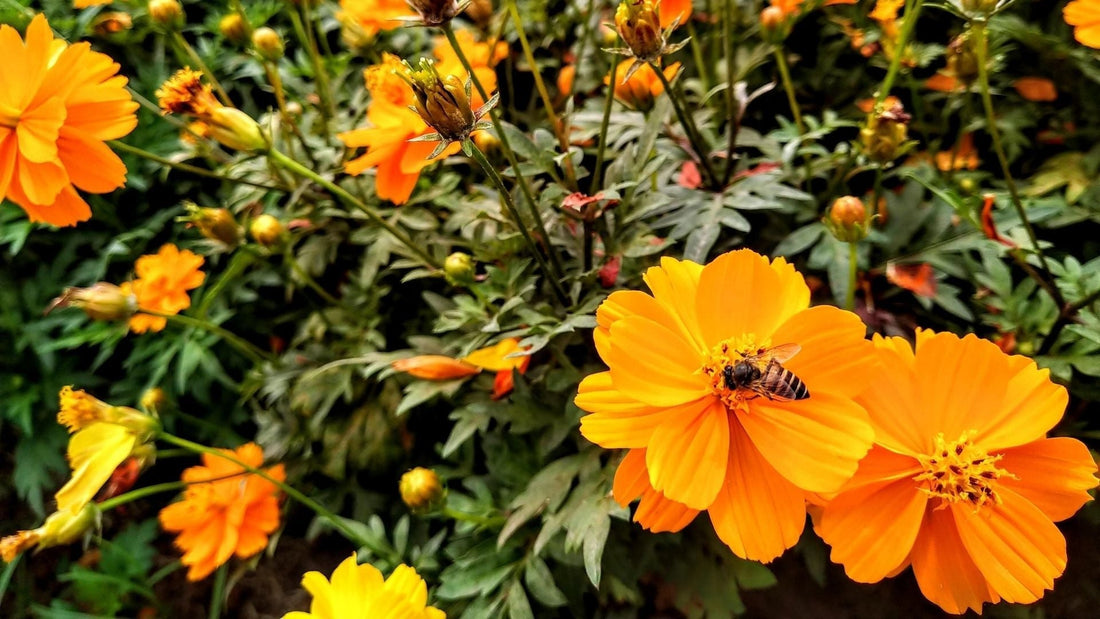
Grow Guide: Sulphur Cosmos
Share
Vibrant, heat-loving, and highly productive, Sulphur Cosmos is one of the best dye plants for rich golden-orange hues.
This pollinator-friendly annual thrives in poor soils and hot, dry conditions. Unlike the more common pink cosmos (Cosmos bipinnatus), Sulphur Cosmos features fiery orange and yellow blooms that produce intense, long-lasting color when used in natural dyeing. It’s a top performer for both visual appeal and dye extraction.
Basic Info:
- Common Names: Sulphur Cosmos, Yellow Cosmos, Orange Cosmos
- Color (for dyeing): Deep yellow, orange, gold; shifts to green or rust with modifiers
- Flower Type: Daisy-like composite
- Scientific Name: Cosmos sulphureus
Cultivation Info:
- Days to Maturity: 60–70 days
- USDA Hardiness Zone: Annual in Zones 2–11
- Planting Depth: 1/4 inch; lightly covered
- Plant Spacing: 10–12 inches apart
- Growth Habit: Upright and bushy; 2–4 feet tall
- Soil Preference: Well-drained, low-fertility soil
- Light Preference: Full sun
Additional Information:
- Taxonomy: Family Asteraceae
- Seed Type: Open-pollinated; often sold in bright orange or yellow color mixes
- Sow Instructions: Direct sow after last frost or start indoors 4–6 weeks prior; germinates in 5–7 days at 70°F
- Diseases: Generally disease-resistant; occasional powdery mildew late in season
- Pests: Minimal; deer- and rabbit-resistant
Natural Dyeing Use:
Sulphur Cosmos is one of the strongest flower-based dye plants for bold yellow and orange tones. The petals contain carotenoids, which bond well with natural fibers—especially silk and wool. Using alum mordant yields golden oranges, while modifiers like iron or copper can shift the hue toward olive green or rusty brown. Works well in solar dye jars, simmer extractions, and bundle dyeing. Petals can be used fresh or dried.
Troubleshooting Tips:
-
Too much foliage, not enough blooms? Avoid rich soil and fertilizer—stress encourages flower production.
-
Weak stems? Provide support or plant in clusters.
- Fewer blooms later in season? Deadhead regularly to encourage continuous flowering.
